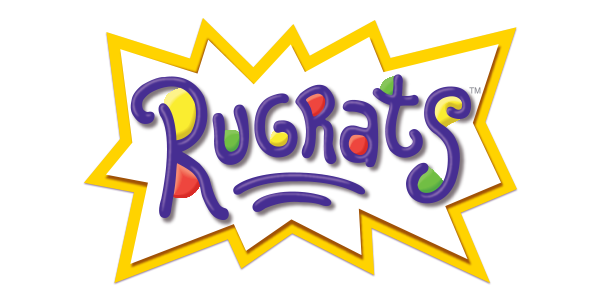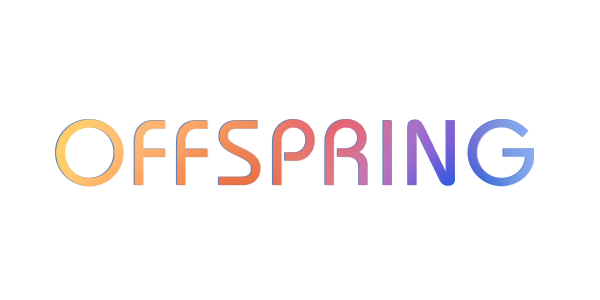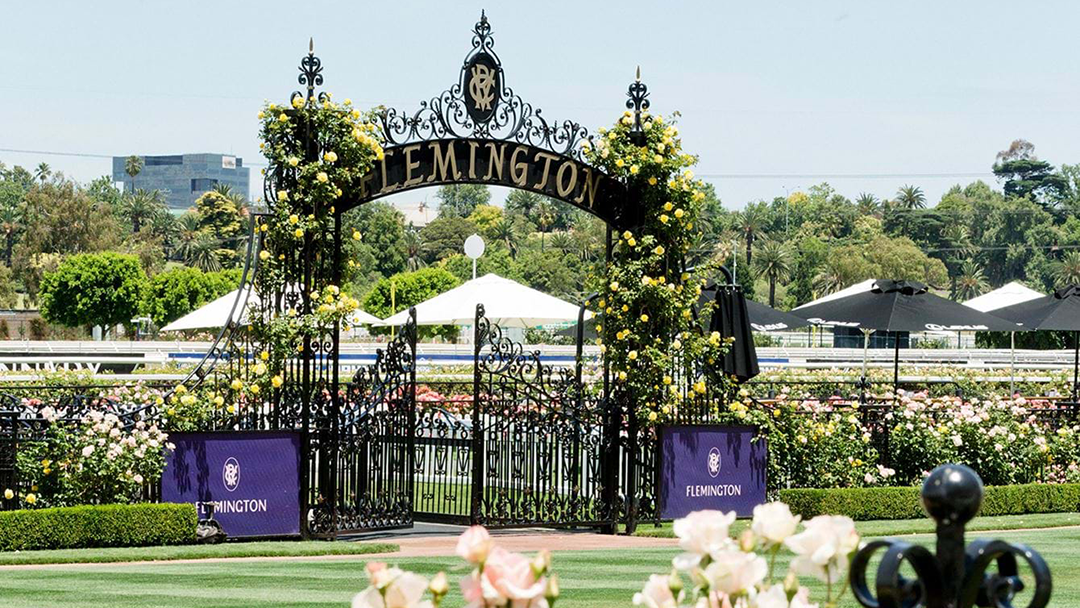From one end to the other, the whole course is full of interesting historical features, each with its own story about the hallowed grounds of Flemington.
Phar Lap statue
Phar Lap, foaled in New Zealand in 1926, became the most famous and best loved racehorse in Australian History. As the world struggled through the early years of the great depression, the wonder horse known as the “The Red Terror” won 37 races including the 1930 Melbourne Cup.
Often handicapped to carry enormous weights, Phar Lap still won lengths ahead of his competitors. His career ended in drama and tragedy. In 1931 he was sent by ship to America to compete in one of the world's richest races at Agua Caliente, in northern Mexico.
He won the race easily, but 16 days later he was dead after an apparent colic attack. In Australia the news was received with shock and disbelief. Rumours of poisoning quickly circulated but were never substantiated.
In 1988, as part of Australia’s Bicentennial celebrations, the VRC commissioned a bronze statue of Phar Lap from renowned sculptor Peter Corlett. The Phar Lap statue is 10 per cent larger than life size, and stands heroically on course in front of the Flemington Heritage Centre.

The Birdcage
The Birdcage refers to the area where horses are stabled in preparation for their race. The term originates from the nickname given to the saddling paddock at historic Newmarket racecourse in England. Flemington’s first Birdcage was established in 1887 to provide a barrier between the horses and the spectators to avoid accidents.
To deter large numbers of people entering the area for a ‘look at the horses’ an additional charge was made for admission. The exclusivity of the area soon made it the place to be seen for elegant racegoers.
In 1923 the current stalls area was established and in 2007, the VRC replaced this ageing ‘Birdcage’ area with a state-of-the-art complex to house 125 horses. A 180m tunnel was constructed from the parade ring to the mounting yard to provide safe access for horses and prevent overcrowding during busy periods such as the Melbourne Cup Carnival.
Now when the term Birdcage is used it’s in relation to the Melbourne Cup Carnival marquee enclosure adjacent the horse stalls. Like its forebear the Birdcage Enclosure is exclusive and the place to be seen.
Clerks of the course
The clerk of the course, along with the starter, judge and stewards, are traditional horseracing officials. Their job is to maintain order among the runners before and after the race and to respond to any emergencies on the track. Therefore clerks have to be calm, daring and accomplished riders.
The clerk of the course is easily identified by the traditional red hunting jacket worn and their majestic mount which is usually a grey horse. Most clerks of the course horses are former racehorses that have been selected for their calm temperament and carefully retrained for the role. Subzero, winner of the 1992 Melbourne Cup, served as a clerk of the course horse from 1994 to 2008.
Carbine's stall
Carbine was not only Phar Lap's great-great-grandfather but shares with him the honour of being considered one of the greatest horses in Australian racing history. He was foaled in New Zealand but most of his racing career was in Australia. He carried a record 10 stone 5 pounds (65.5 kg) to win the 1890 Melbourne Cup in a huge field of 39 runners.
He became a very important stallion and late in his career was exported to England, where he sired winners of the English Derby and other great races. In 1990 the VRC arranged for the preservation of the wooden stalls where Carbine used to be housed when stabled at Flemington, on the thoroughfare to the horse stalls.
Mounting Yard
The Mounting Yard is the area through which the runners enter and exit the track. Here the horses gather, jockeys mount and trainers give final instructions prior to the race. On return the placegetters await the official results and winning presentations are made.
Flemington’s Mounting Yard was relocated from beside the winning post to infront of the “old” Members’ Stand in the 1920s. In the 1990s the area was expanded to almost double its size and a tunnel leading directly to the horse stalls was added in 2007.
The ornate iron arch leading to the track was installed in 1995. It towers over fences brimming with Flemington’s trademark spectacular roses and its style is echoed in the design of the famous winning post.
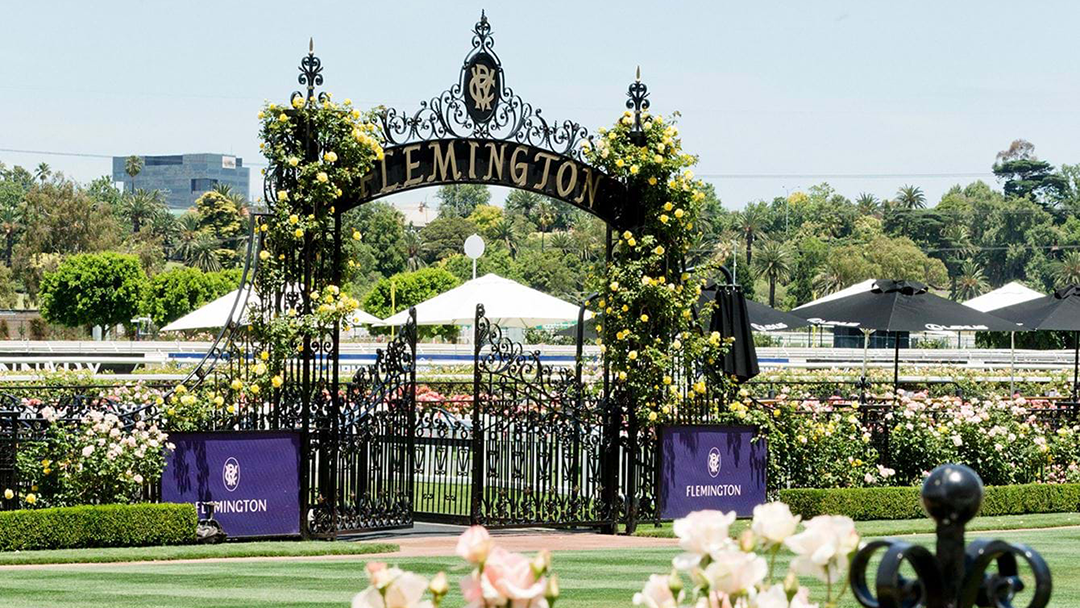
Committee Room
The Committee Room at Flemington has traditionally been the meeting place for the Club's Directors on race days, and the centre of the Victoria Racing Club's hospitality to a remarkably long list of distinguished guests from Australia and around the world.
In 1985 the Committee Room was relocated to its present position in what was originally called the Link Stand and later known as the Prince of Wales Stand. Timber panelling was chosen for the interior to make a connection with the décor of the earlier Committee Room in the 1924 Members’ Stand, and the rooms were again partially renovated in 2007.
With the incorporation of the Victoria Racing Club in 2006, a Board of Directors succeeded the Committee. The new Board, respecting tradition and the contribution made by all the past members of Committee, resolved that this gathering place at the heart of Flemington will remain The Committee Room.
Hill Stand
The high point or hill at Flemington has always been a natural vantage point, but not all of this land was originally part of the racecourse. The VRC bought land to extend the area in the 19th century, and basic public grandstands, shelters and facilities occupied the site. In 1977 the VRC constructed on the hill its largest grandstand to that time, at a cost of $8.5 million.
It was a four-tiered stand. Opposite the winning post, it is for many racegoers, the best place to watch the races. The stand is open to the public and has all facilities including bookmakers, tote, restaurants and bars.
Murals
Installed on the sloping interior walls of the Hill Stand, the seven magnificent panels tracing the history of racing constitute a rare work of art. The renowned Australian artist Harold Freedman and his studio assistants depicted dozens of landscapes, scenes and portraits of horses and racing personalities in extraordinary detail.
These represent the history of racing internationally as well as in all states of Australia, with an emphasis on Flemington and the Melbourne Cup. The work was commissioned to mark the Australian bicentenary, and was completed after several years at the end of 1988. The original research and the resulting pictures were used as the basis of the book series The History of Australian Thoroughbred Racing by author and historian Andrew Lemon.
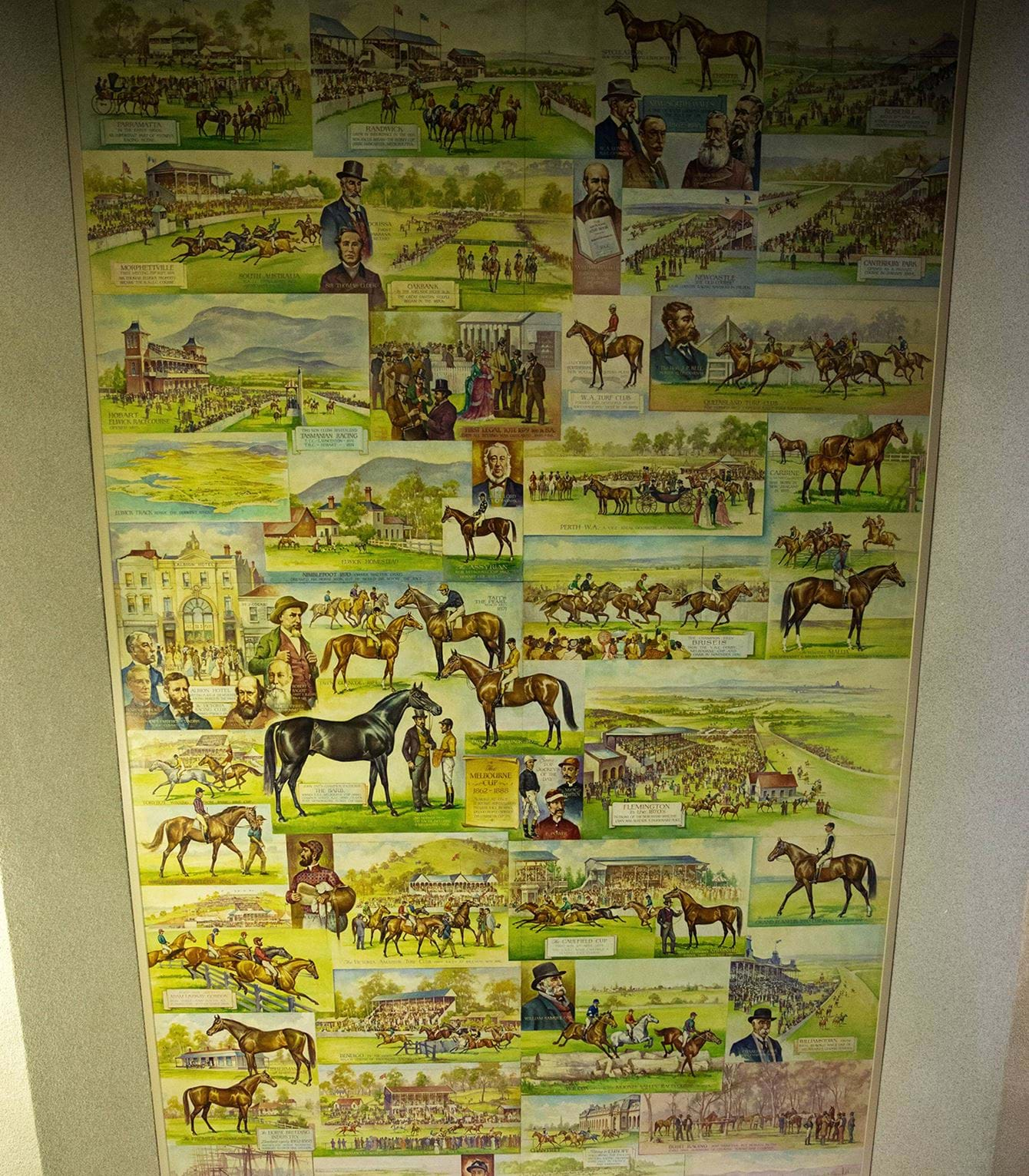
Source: Victoria Racing Club








